Responding to the government's call to increase the energy density of lithium-ion batteries has become a hot issue for battery manufacturers and research institutions. Ningde Times, Tianjin Lishen, Guoxuan Hi-Tech and other teams have basically realized the research and development of 300 watt-hour/kilogram power battery. In addition, there are still a large number of units that carry out related development and research work.
The composition of lithium-ion batteries for flexible packaging usually includes positive electrodes, negative electrodes, separators, electrolytes, and other necessary auxiliary materials such as tabs, tapes, and aluminum plastics. According to the needs of the discussion, the author of this article will be divided into two categories: pole piece unit and non-contribution energy matter. The pole piece unit refers to one positive pole plus one negative pole, and all positive poles in the whole battery The negative electrode can be seen as a combination of a number of pole pieces consisting of pole pieces; the non-contributive energy material means everything except the pole piece combination, such as diaphragm, electrolyte, tab, aluminum, protective tape and termination. Tape and so on. For lithium-ion batteries of common LiMO 2 (M = Co, Ni, and Ni-Co-Mn etc.)/carbon systems, the combination of pole pieces determines the capacity and energy of the battery.
At present, in order to realize the goal of battery quality than energy of 300Wh/kg, the main methods include:
(1) Choose a high-capacity material system. The positive electrode uses high nickel ternary and the negative electrode uses silicon carbon;
(2) Design high pressure electrolyte to increase the charge cutoff voltage;
(3) Optimize the formulation of positive and negative slurry, increase the proportion of active material in the electrode;
(4) Use thinner copper foil and aluminum foil to reduce the proportion of current collectors;
(5) increase the coating amount of positive and negative electrodes and increase the proportion of active material in the electrode;
(6) Control the amount of electrolyte, reduce the amount of electrolyte to increase the specific energy of lithium-ion battery;
(7) Optimize the structure of the battery and reduce the proportion of the tabs and packaging materials in the battery.
In the three battery types of cylindrical, square hard shell and soft lamination, the soft battery has the characteristics of flexible design, light weight, small internal resistance, less explosion, more cycles, etc. The specific energy of the battery is also prominent.
Therefore, laminated laminated pouch lithium-ion battery is currently the focus of research. In the process of designing laminated lithium-ion battery packs, the main variables can be divided into the following six aspects. The first three are considered to be determined by the level of the electrochemical system and the design rules. The latter three are usually model designs. Concerned variable factors.
(1) Positive and negative electrode materials and formulations;
(2) positive and negative electrode compaction densities;
(3) Ratio of negative electrode capacity (N) to positive electrode capacity (P) (N/P);
(4) The number of pole pieces (equal to the number of positive pieces);
(5) The amount of positive electrode coating (On the basis of N/P, the positive electrode coating amount is determined first, and then the negative electrode coating amount can be determined);
(6) The single-sided area of ​​a single positive electrode (determined by the length and width of the positive electrode sheet. When the length and width of the positive electrode sheet are determined, the size of the negative electrode sheet is also determined, and the size of the battery core can be determined).
First of all, according to [1], the influence of the number of pole pieces, the amount of positive electrode coating, and the area of ​​a single cathode on the specific energy and energy density of the battery was investigated. The specific energy (ES) of the battery can be expressed as (1).

In formula (1): x is the number of positive plates included in the battery; y is the positive electrode coating amount, kg/m2; z is the area of ​​a single surface of a single positive electrode, m2; x∈N*, y> 0, z > 0;e( y,z ) is the energy that a pole piece can contribute, Wh. See equation (2) for the formula.

In formula (2): DAV is the discharge average voltage, V; PC is the ratio of positive electrode active material mass to positive electrode active material plus conductive agent plus binder total mass, %; SCC is the specific capacity of positive electrode active material, Ah/ Kg;m( y,z ) is the mass of a pole piece unit, kg. See equation (3) for the calculation formula.

In formula (3): KCT is the ratio of the total area of ​​the monolithic positive electrode (the sum of the area of ​​the coating area and the tab area) to the surface area of ​​the monolithic positive electrode, and is greater than 1; TAl is the thickness of the aluminum current collector, m; ÏAl is the density of the aluminum current collector, kg/m3; KA is the ratio of the total area of ​​the negative electrode to the area of ​​the single face of the monolithic positive electrode, and is greater than 1; TCu is the thickness of the copper current collector, m; pCu is the copper current collector Density, kg/m3; N/P is the ratio of negative electrode capacity to positive electrode capacity; PA is the ratio of negative electrode active material mass to the total mass of negative electrode active material plus conductive agent plus binder, %; SCA is the ratio of negative electrode active material Capacity, Ah/kg. M( x,y,z ) is the mass of the non-contributing energy material, kg, the formula is shown in equation (4)

In formula (4): kAP is the ratio of aluminum-plastic area to the area of ​​a single-sided positive electrode, and is greater than 1; SDAP is the areal density of aluminum-plastic, kg/m2; mTab ​​is the total mass of positive and negative electrodes. As a constant; mTape is the total mass of the tape, can be seen as a constant; kS is the ratio of the total area of ​​the diaphragm and the total area of ​​the positive electrode, and greater than 1; SDS is the areal density of the diaphragm, kg / m2; kE is the electrolyte quality and battery The ratio of capacity, this coefficient is positive. Based on this, it can be concluded that any single factor x, y, and z increases, which will increase the specific energy of the battery.
In order to study the significance of the number of pole piece units, the amount of positive electrode coating, and the area of ​​a single positive electrode on the specific energy and energy density of the battery, first select an electrochemical system and design rule (ie, determine the electrode material and formulation, Compaction Density, N/P, etc., and then orthogonally combine the levels of the three elements of the number of pole pieces, the amount of positive electrode coating, and the area of ​​one surface of the positive electrode, to determine the electrode materials for a certain group. The calculated battery specific energy and energy density calculated based on the formula, compaction density, and N/P were subjected to range analysis.
Orthogonal design and calculation results are shown in Table 1. The results of the orthogonal design were analyzed using the range method. The results are shown in Figure 1. The specific energy and energy density of a battery monotonically increase with the number of pole pieces, the amount of positive electrode coating, and the area of ​​a single sheet of positive electrode. In the three factors of the number of the pole piece unit, the amount of positive electrode coating, and the area of ​​the single-face positive electrode, the coating amount of the positive electrode has the most significant influence on the specific energy of the battery; the number of the electrode unit, the coating amount of the electrode, and the positive electrode Among the three factors of the single-sided area, the single-sided area of ​​the positive electrode has the most significant effect on the energy density of the battery.
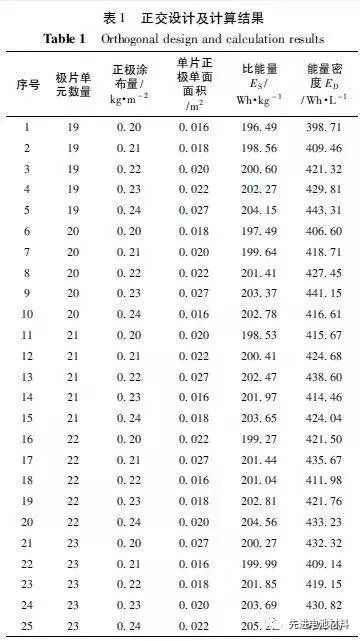
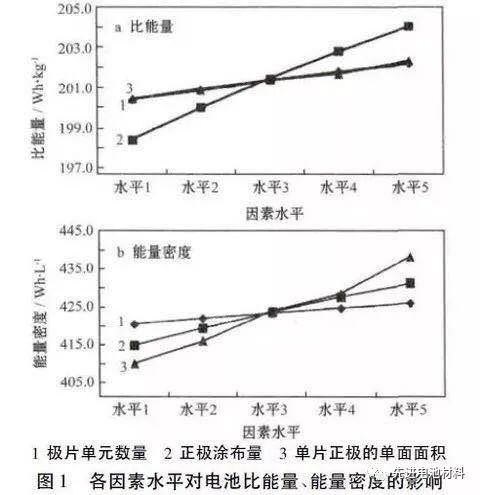
As can be seen from Figure 1a, the specific energy of the battery monotonically increases with the number of pole piece units, the amount of positive electrode coating, and the area of ​​the single-face positive electrode, which verifies the correctness of the previous part of the theoretical analysis; the most significant factor affecting the specific energy of the battery is Positive coating amount. From Figure 1b, it can be seen that the energy density of the battery monotonically increases with the number of pole pieces, the amount of positive electrode coating, and the area of ​​the single-face positive electrode. This also verifies the correctness of the previous part of the theoretical analysis; the most significant factor affecting the battery energy density. It is the single-sided area of ​​a monolithic positive electrode.
According to the above analysis, if we want to increase the specific energy of the battery, it is the key to increase the coating amount of the positive electrode as much as possible. After determining the upper limit of acceptable coating amount of the positive electrode, adjust the remaining factor level to achieve the customer's requirements; The energy density of the battery, as far as possible to increase the single-sided area of ​​the single-chip positive electrode is the key, after determining the upper limit of the single-sided area of ​​the accepted single-piece positive electrode, adjust the remaining factor level to achieve the customer's requirements.
Based on this, it can be concluded that the specific energy and energy density of a battery monotonically increase with the number of pole pieces, the amount of positive electrode coating, and the area of ​​a single surface of a positive electrode. In the three factors of the number of pole piece units, the amount of positive electrode coating, and the area of ​​one side of the single-piece positive electrode, the coating amount of the positive electrode has the most significant influence on the specific energy of the battery; the number of the electrode units, the coating amount of the electrode, and the single-piece positive electrode Among the three factors of the single-sided area, the single-sided area of ​​the positive electrode has the most significant effect on the energy density of the battery.
Then, according to the literature [2], it is discussed how to make the battery quality only when the battery capacity is required only when the battery size and other performance indexes are not required under the determined material system and processing technology level. The battery mass calculation using the number of positive electrodes and the aspect ratio of the positive electrode as independent variables is shown in equation (5).
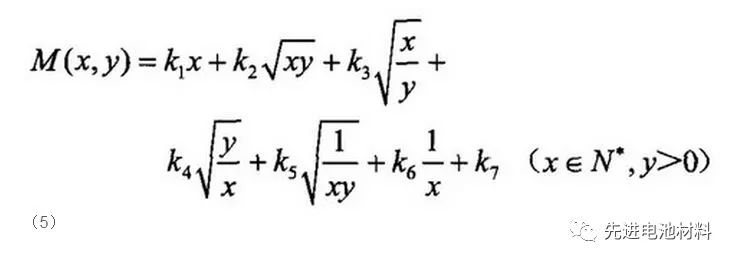
In equation (5), M(x,y) is the total mass of the cell; x is the number of positive plates in the cell; y is the aspect ratio of the positive plate (its value is equal to the width divided by the length, as shown in Figure 2); K1, k2, k3, k4, k5, k6, and k7 are coefficients whose values ​​are determined by 26 parameters related to the battery capacity, material system, and processing technology level. See Table 2. When the parameters in Table 2 are determined, the coefficients are determined. It follows that the relationship between 26 parameters and k1, k2, k3, k4, k5, k6, and k7 is very simple, but the derivation process is cumbersome. Mathematical derivation of publicity (5), by adjusting the number of positive plates and the ratio of length to width of the positive plate, can achieve the minimum battery quality that the model design can achieve.
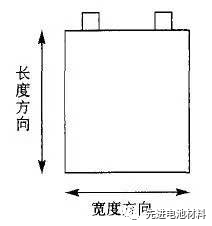
Figure 2 Stacked battery length and width
Table 2 Laminated battery design parameters:
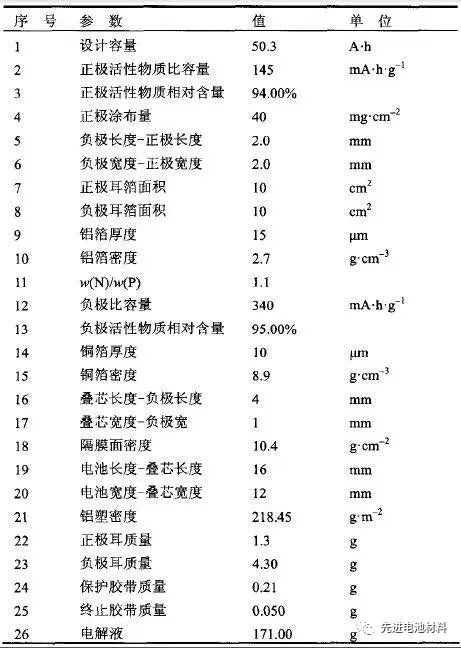
In Table 2, the specific value is the actual parameter value of the battery with a capacity of 50.3 Ah, and the related parameters determine that k1, k2, k3, k4, k5, k6, and k7 are 0.041, 0.680, 0.619, 13.953, 8.261, 639.554, 921.609, respectively. , x is 21, y is 1.97006 (positive electrode sheet width 329 mln, length 167 mm), after optimization, when the number of positive pole pieces is 51, the battery quality is minimum.
The hendlight wiring harness apply for household appliance, automotive, motocycle, bus, bike, truck, medical equipment.
Yacenter has experienced QC to check the products in each process, from developing samples to bulk, to make sure the best quality of goods. Timely communication with customers is so important during our cooperation.
If you can't find the exact product you need in the pictures,please don't go away.Just contact me freely or send your sample and drawing to us.We will reply you as soon as possible.
Headlight Wiring Harness,Headlight Harness,Headlamp Wiring Harness,Headlight Wiring Kit
Dongguan YAC Electric Co,. LTD. , https://www.yacentercns.com